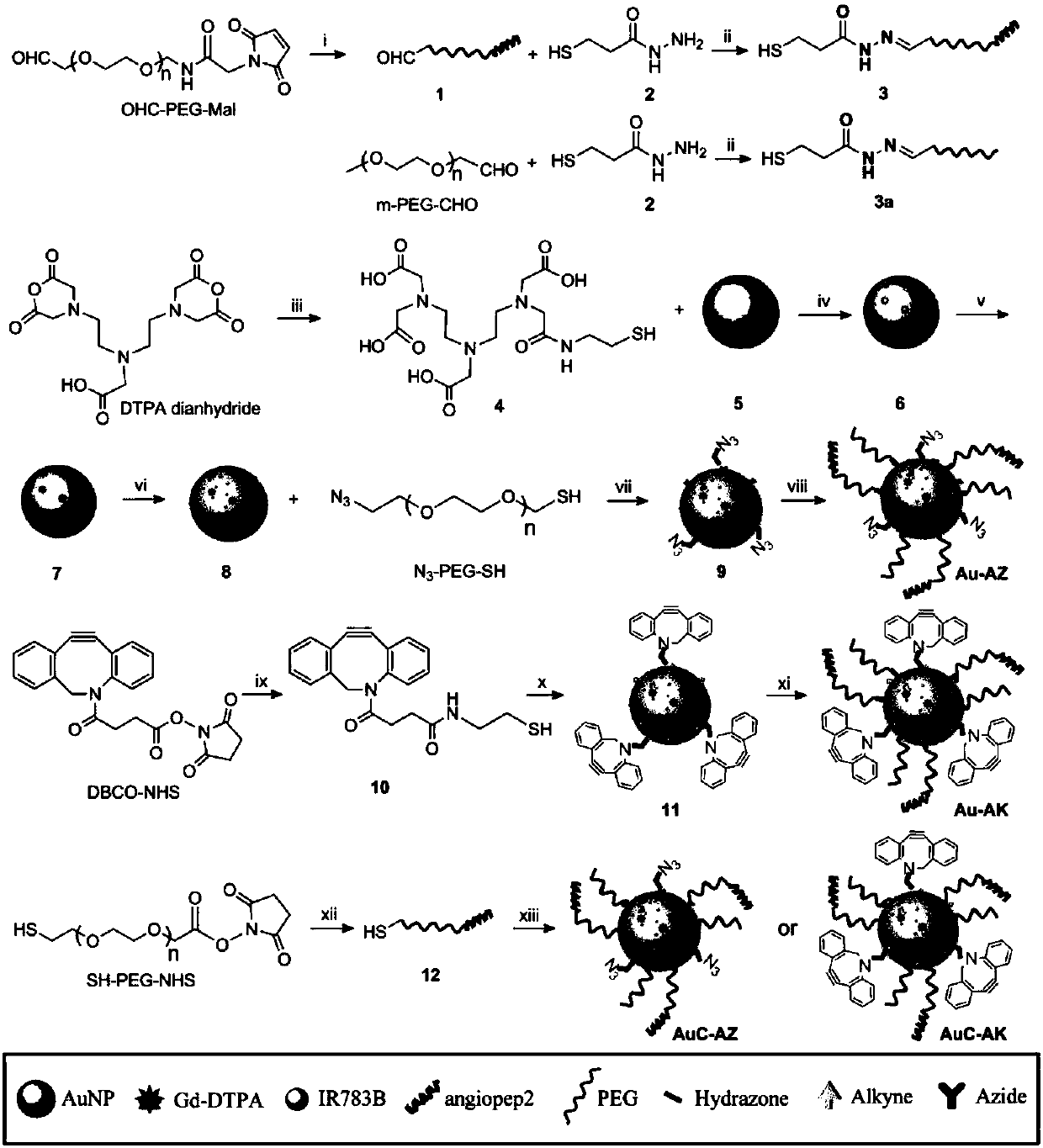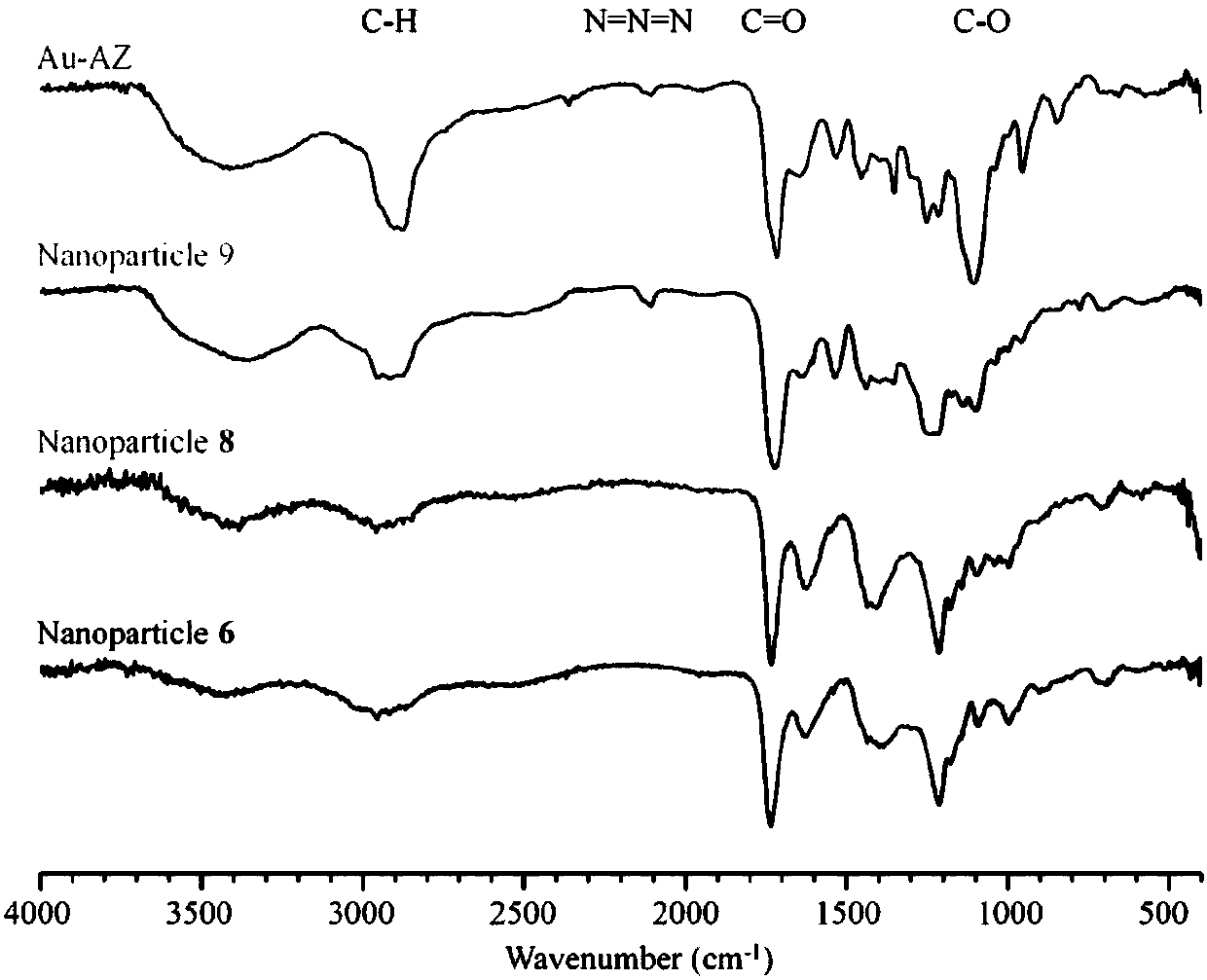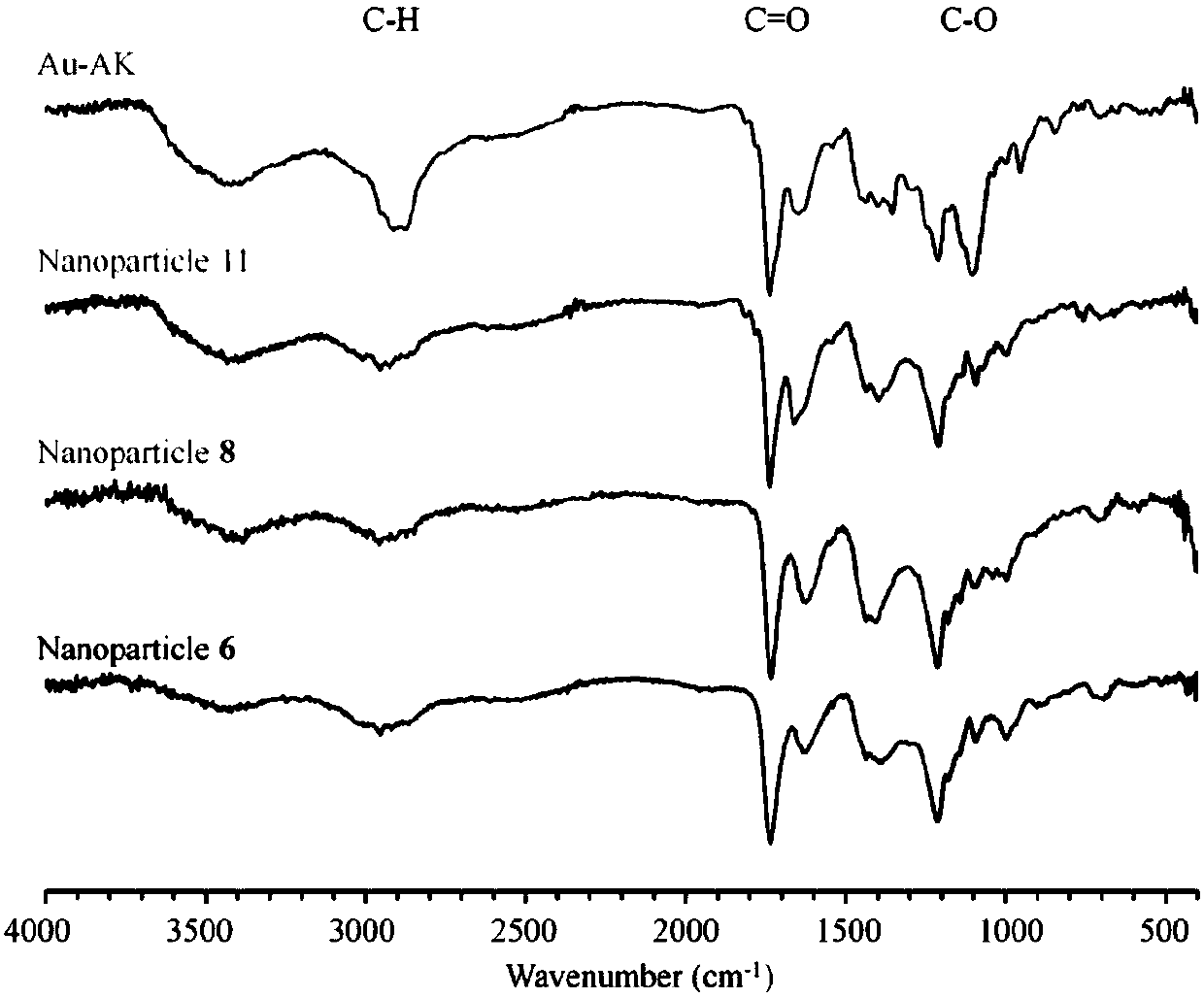Bimodal nanoprobes for image-guided brain tumor resection
A nano-probe, dual-mode technology, applied in the field of dual-mode nano-probes, can solve the problems of difficulty in precise excision, high mortality, and less superposition of surface electromagnetic fields, and achieves good signal enhancement performance and chemical stability. , Raman signal enhancement effect
- Summary
- Abstract
- Description
- Claims
- Application Information
AI Technical Summary
Problems solved by technology
Method used
Image
Examples
Embodiment 1
[0027] Example 1 Synthesis of dual-mode nanoprobes Au-AZ and Au-AK
[0028] according to figure 1In the synthetic route shown, polyethylene glycol Mal-PEG-CHO (6.0 mg, 3 μmol) and carbon-terminal lysine-modified Angiopep2 (7.2 mg, 3 μmol) were dissolved in 10 mL of DMF, and stirred at room temperature for 30 minutes to obtain compound 1. Methyl 3-mercaptopropionate (50mg, 0.42mmol) and hydrazine hydrate (60mg, 1.2mmol) were dissolved in 30mL ethanol, stirred at room temperature overnight, and the product was purified by silica gel column to obtain Compound 2; Compound 1 (13mg, 3.0μmol) Dissolve compound 2 (0.36 mg, 3.0 μmol) in 1.0M MES (pH 4.7) buffer solution and react overnight at room temperature, and the product is purified by a dialysis bag with a molecular weight cut-off of 1000 to obtain compound 3;
[0029] According to the above method, polyethylene glycol PEG-CHO (60mg, 0.03mmol) and compound 2 (3.6mg, 0.03mmol) were reacted to obtain compound 3a; diethylenetriamin...
Embodiment 2
[0031] The characterization of embodiment 2 bimodal nanoprobe Au-AZ and Au-AK
[0032] During the synthesis of dual-mode nanoprobes Au-AZ and Au-AK, an appropriate amount of the purified product was taken, dissolved in methanol, dropped on the potassium bromide window, dried with methanol, and the infrared spectrum was collected as shown figure 2 and image 3 As shown, 1720cm -1 The place is the stretching vibration peak of C=O in DTPA; 1044 and 1193cm -1 The place is the stretching vibration peak of S=O in IR783B; 2800-2960cm -1 The place is the stretching vibration peak of C-H in PEG; 1650 and 1550cm -1 is the infrared absorption peak of the amide bond in the targeting polypeptide Angiopep2. In the infrared spectrum of Au-AZ, 2100cm -1 Is the infrared absorption peak of N=N=N in the azide compound;
[0033] Take an appropriate amount of dual-mode nanoprobes, dissolve them in deionized water, drop them on the special copper grid for transmission electron microscopy, dr...
Embodiment 3
[0036] Example 3 Application of dual-modal nanoprobes in preoperative glioma localization
[0037] Establish a glioma xenograft nude mouse model according to the usual method;
[0038] The male nude mice were fixed on the brain stereotaxic instrument, and the prepared U87 cell suspension (10 μL / mouse) was injected into the striatum of the nude mice brain, and the tumor growth in the nude mice brain was observed by T2-MRI imaging after 2 weeks , T1-MRI imaging was used to investigate the size of glioma in the brain of nude mice and to conduct preliminary localization of the tumor. The mixture of nano-probes Au-AZ and Au-AK was injected into the tail vein. Performed on an MRI system (Biospect, Bruker), using head coil, isoflurane / oxygen mixed gas anesthesia, and warm water circulation system to maintain the body temperature of nude mice during scanning. The specific imaging parameters are as follows: FOV: 25×25mm, number of excitations: 2, Number of layers: 4 layers, layer thic...
PUM
| Property | Measurement | Unit |
|---|---|---|
| Particle size | aaaaa | aaaaa |
| Thickness | aaaaa | aaaaa |
Abstract
Description
Claims
Application Information
 Login to View More
Login to View More - R&D
- Intellectual Property
- Life Sciences
- Materials
- Tech Scout
- Unparalleled Data Quality
- Higher Quality Content
- 60% Fewer Hallucinations
Browse by: Latest US Patents, China's latest patents, Technical Efficacy Thesaurus, Application Domain, Technology Topic, Popular Technical Reports.
© 2025 PatSnap. All rights reserved.Legal|Privacy policy|Modern Slavery Act Transparency Statement|Sitemap|About US| Contact US: help@patsnap.com



